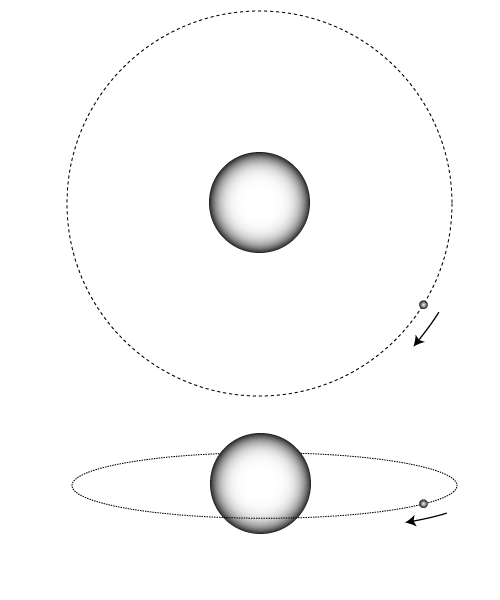
The traditional definition of a “Blue” moon is the third Full Moon in a season containing four Full Moons rather than the usual three. In 1946, Sky and Telescope Magazine inadvertently launched a new, somehow more modern definition of a “Blue” moon as the second Full Moon to occur in a calendar month.
On the scale of urgency, the correct definition of a Blue Moon ranks favorably with such matters of astronomical concern as whether Pluto is a planet. I thus have to admit, that I immediately dropped what I was doing to answer a reporter’s e-mail query:
I read several accounts that the phenomenon will occur on New Year’s Eve based on the recent definition. Do you know if that’s accurate?
I answered:
We here in the United States will indeed be having a Blue Moon on New Year’s Eve according to the currently popular definition of a Blue Moon as “the second Full Moon to occur in a calendar month”.
The times at which the Moon is full (which occurs when the Sun, Earth and Moon form a line as viewed from above) can be calculated with great precision and with zero ambiguity. The current set of Full Moon times are:
02 December 2009 at 07:30 GMT
31 December 2009 at 19:13 GMT
30 January 2010 at 06:17 GMT
28 February 2010 at 16:38 GMT
30 March 2010 at 02:25 GMT
GMT stands for “Greenwich Mean Time”. This is the same as Universal Time, and corresponds to the current time zone for England (where the Greenwich Observatory is located). As you can see, for GMT, there are Full Moons in December 2009.
Here in California, we’re currently on Pacific Standard Time, which is 8 hours behind GMT. That means we had a Full Moon on Dec 1st at 11:30 PM, and we’ll have the next one on New Year’s Eve at 11:13 AM in the morning, giving us a Blue Moon.
In Australia, which lies between 8 and 10.5 hours ahead of GMT, the next Full Moon will occur on New Year’s Day, 2010. Australia, therefore, will not be experiencing a Blue Moon on New Year’s Eve, 2009 (the same is true for Japan, China, etc.).
Revelers in the Far East, however, should not feel left out. If you look at the table above, you’ll see that the Far East will experience a “double Blue Moon” in 2010, in which both the months of January and March will contain two Full Moons.
Blue Moons have no astronomical significance. The “Blue Moon” is just a name in the same sense as a “Hunter’s Moon” or a “Harvest Moon”. The Blue Moons are a purely cultural artifact that arise from the juxtaposition of the celestial clockwork of the lunar and terrestrial orbits with the Gregorian Calendar, which was introduced on 24 February 1582 through a papal bull by Pope Gregory XIII, and which has now been adopted worldwide as the standard civil calendar.
Even though Blue Moons have no astronomical significance, there is something oddly appealing about events that stem from the overlap (or better, the “beating”) between the precise orbital rhythms of planets and moons, and the ebb and flow of human-centered events here on Earth. At my weblog, oklo.org, I’ve been promoting a new holiday, ” ‘606 day”, which occurs every 111.43637 days when the wildly eccentric transiting planet HD 80606b makes its dramatic perihelion passage.
The ‘606 days for 2010 will occur on (adopting Universal Time):
Jan 8, 2010 at 9:49 AM
April 29, 2010 at 8:17 PM
August 19, 2010 at 6:45 AM
Dec 8, 2010 at 5:12 PM
In normal years, there are only three ‘606 days. In 2010, however, we’re lucky to have four. This “extra” ‘606 day is analogous to a blue moon.
Happy Holidays!
-Greg
(For readers unfamiliar with HD 80606b and ‘606 days, see):
http://oklo.org/2009/01/29/the-big-swing/, http://oklo.org/2009/02/08/whats-your-angle/, http://oklo.org/2009/02/12/ready-set/, http://oklo.org/2009/02/12/go/, and http://oklo.org/2009/02/25/hd-80606b-transit-detected/
Update 1/2/10: Here’s a link to a call-in interview that I did on KPCC (L.A. Public Radio). As you’ll hear, there’s one regrettable gaffe where I say that a year contains “thirty days”… Not quite becoming of an Astronomy Professor!


















